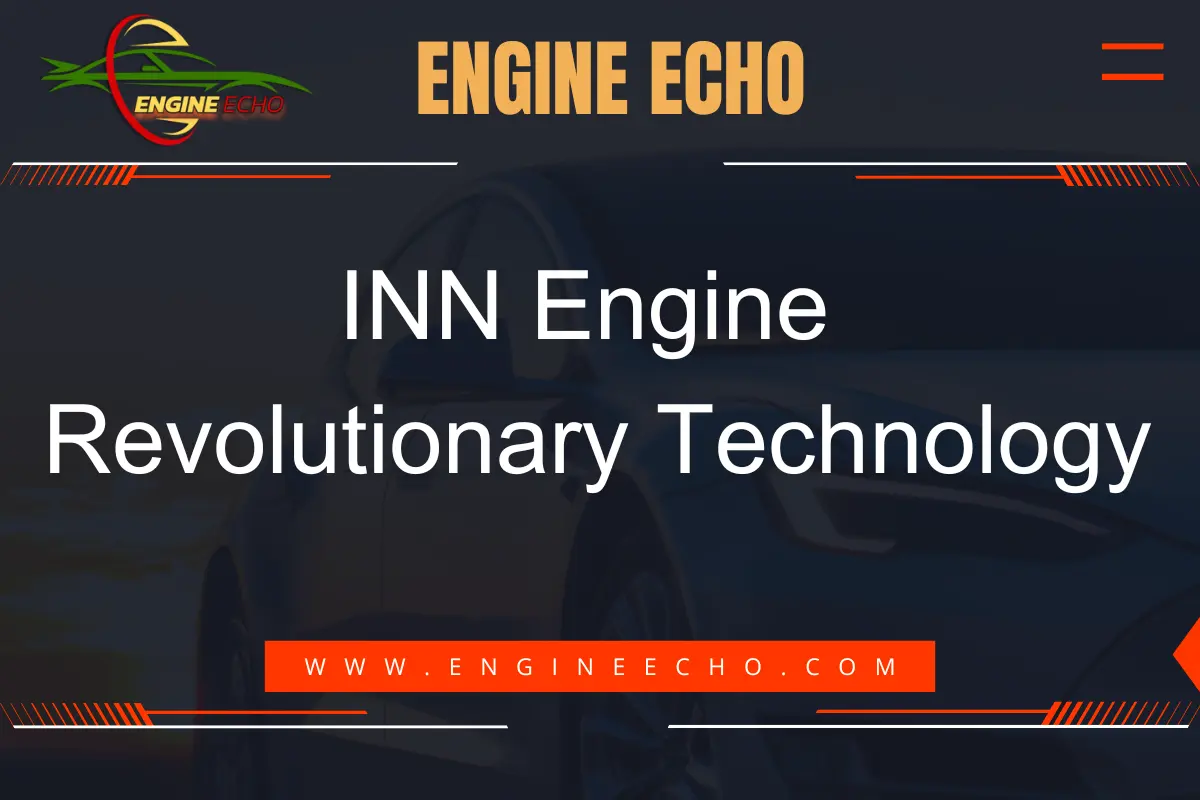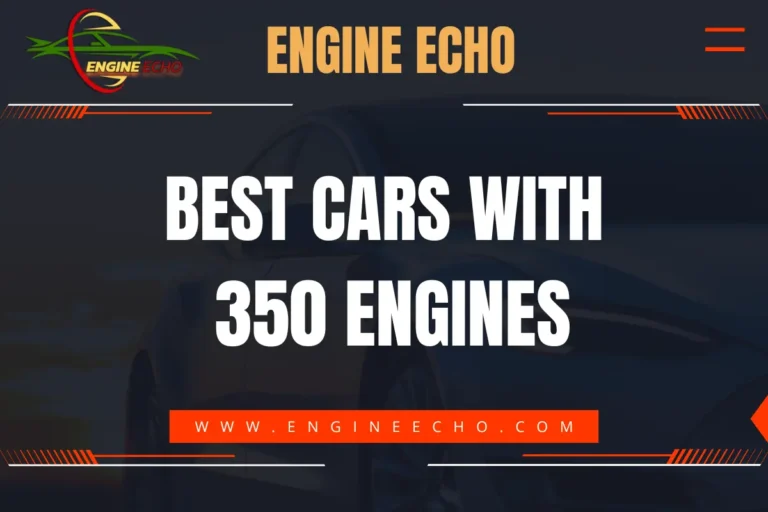INN Engine: Revolutionary Technology

Key Takeaways
- The INN Engine introduces innovative combustion techniques for higher efficiency and fewer emissions.
- Its compact design with fewer parts reduces maintenance and increases overall reliability.
- The engine’s superior fuel efficiency makes it a sustainable alternative to traditional internal combustion engines.
- With potential applications in automotive, aviation, and other industries, the INN Engine could revolutionize how machines are powered.
- The technology emphasizes a shift towards eco-friendly, sustainable energy solutions in industries seeking lower environmental impact.
Introduction
From the moment I came across the INN Engine, I knew it wasn’t just another engine innovation—it felt like the kind of breakthrough that could change everything. We’ve reached a point where the inefficiencies of traditional engines and their environmental costs are becoming harder to ignore. That’s why I’m excited to share why I think the INN Engine is such a game-changer, not just for efficiency but for sustainability as well. By rethinking the internal combustion process, the INN Engine simplifies things, making it more efficient and eco-friendly—exactly what we need right now. Let’s dive into what makes this engine stand out.
1. What is the INN Engine?
The Concept Behind the INN Engine
The INN Engine isn’t just a tweak on the existing design of internal combustion engines—it’s a whole new way of thinking. Instead of the usual piston-driven setup, this engine uses a rotary design that cuts down the number of parts, reducing friction and improving efficiency. It’s simpler, smoother, and just makes more sense.
Founders and Development
This engine came from a team of engineers who weren’t satisfied with the status quo. After years of dealing with traditional engines, they knew there had to be a better solution. And after countless trials, they’ve built an engine that not only tackles inefficiency but is also much more reliable and environmentally friendly.
2. Technological Innovation
How the INN Engine Works
The INN Engine’s rotary mechanism runs smoother than conventional engines, with fewer moving parts. Less friction means less wasted energy, which translates into more efficient fuel consumption. Unlike traditional engines that struggle with wear and tear, this one operates more seamlessly, making each fuel drop count.
Materials and Design
One thing that impresses me about the INN Engine is its lightweight yet durable design. Using advanced materials, it’s built to last without adding unnecessary weight. This also helps reduce friction even more, which is great for long-term reliability and efficiency. From my experience, fewer parts mean fewer things that can go wrong—and that’s a big deal.
3. Advantages of the INN Engine
Fuel Efficiency and Emissions
What excites me the most about the INN Engine is how efficient it is with fuel. Unlike traditional engines that waste a lot of energy and release harmful emissions, this engine burns fuel more effectively, which results in fewer emissions. In today’s world, where sustainability is a must, this engine’s clean burn is a step in the right direction.
Durability and Reliability
I’ve seen plenty of engines break down due to wear and tear, especially ones with too many complex parts. The simplicity of the INN Engine, with fewer moving parts, makes it far more reliable. This means less maintenance and fewer breakdowns. For anyone tired of constant repairs, this engine’s reliability is a breath of fresh air.
4. Applications of the INN Engine
Automotive Industry
For the automotive sector, the INN Engine could be a game-changer. It’s more efficient, lighter, and performs better than traditional engines. I can easily see it replacing older combustion engines, especially in hybrids and electric vehicles, extending their range while cutting down emissions. If you’re in the automotive world, this engine should definitely be on your radar.
Aviation and Aerospace
Aviation, in particular, can benefit from the INN Engine’s lightweight design. I’ve always been fascinated by how planes manage fuel consumption, and this engine has the potential to make a huge difference. Airlines could travel farther on less fuel, which would reduce costs and help the environment. It’s an exciting prospect for the future of air travel.
5. Performance Metrics
Comparison with Traditional Engines
When you compare it to traditional engines, the INN Engine clearly wins. Its power-to-weight ratio is better, and the reduced friction means it burns fuel more efficiently. I’ve worked with piston engines before, and they lose so much energy in heat and friction. The INN Engine fixes this, making the most out of every drop of fuel.
Cost and Efficiency
Yes, the upfront cost of the INN Engine might be higher, but the long-term savings on fuel and maintenance make it well worth the investment. If cutting operational costs is important to you, this engine is definitely worth considering. It’s not just about immediate savings, but the bigger picture—better performance with less ongoing expense.
6. Environmental Impact
Reducing Carbon Footprint
From my perspective, the INN Engine’s environmental impact is one of its biggest strengths. It burns fuel more cleanly, cutting emissions dramatically compared to traditional engines. As industries push to lower their carbon footprints, this engine offers a way to do so without compromising on performance.
Compatibility with Clean Energy
One of the things I’m particularly excited about is the INN Engine’s potential to work with alternative fuels like biofuels and hydrogen. This makes it a future-proof option as we move towards renewable energy. Its adaptability is key for industries looking to make greener choices without waiting for all-electric infrastructure.
7. Industry Case Studies
Automotive Companies Testing INN Engines
Automotive manufacturers are already testing the INN Engine, and the results have been really promising. These companies report better fuel economy and lower emissions, which is exactly what we need as we move towards greener technologies. I wouldn’t be surprised if we start seeing this engine in commercial vehicles soon.
Aviation Industry Trials
The aviation industry is also testing the INN Engine, and the feedback has been positive so far. Airlines are always looking for ways to cut fuel costs, and this engine could be the solution they’ve been waiting for. It’s exciting to think about how much fuel savings this engine could offer in the long run.
8. Comparison to Electric Engines
Efficiency
Electric engines are great, but they still have limitations—like range and charging infrastructure. The INN Engine strikes a balance by offering amazing fuel efficiency without requiring a complete overhaul of fueling systems. It’s the perfect solution for industries that aren’t ready to go fully electric just yet but still want to reduce emissions.
Limitations
Of course, it’s not a zero-emission engine, since it still relies on fuel combustion. But for industries that can’t fully switch to electric just yet, the INN Engine offers a powerful compromise—way better efficiency and lower emissions, without the need for charging infrastructure.
9. Future Trends and Predictions
Scaling and Mass Production
Scaling up new technology is always tricky, but with the right partnerships, I think the INN Engine will be able to overcome those challenges. Once mass production kicks in, we could see this engine become widely available, helping industries everywhere shift towards more sustainable options.
Potential Upgrades
I’m excited to see what future upgrades will look like. There’s already talk of improving fuel efficiency even more and making it compatible with a wider range of clean fuels. If that happens, this engine could truly lead the way in sustainable power solutions.
10. How the INN Engine is Changing the Market
Disruption in the Automotive Industry
The INN Engine has the potential to shake things up in the automotive industry. As more manufacturers adopt it, we’ll likely see major changes in how cars are powered and how they perform. It’s exciting to think about what’s coming next as this technology gains traction.
Potential in Emerging Markets
For emerging markets, where electric vehicle infrastructure might not be fully developed yet, the INN Engine offers an immediate, practical solution. Its efficiency and lower costs make it an attractive option for regions still relying heavily on traditional fuel sources.
11. Common Misconceptions about the INN Engine
Myths vs. Reality
Some people might be skeptical of the INN Engine because of its unconventional design, but having worked with engines that have way too many moving parts, I can tell you that simpler designs are usually more reliable. The fewer parts, the less chance of something going wrong—and the INN Engine gets that balance just right.
Public Perception
As more industries adopt the INN Engine, I think we’ll see a big shift in public perception. It’s only a matter of time before this engine becomes widely recognized as one of the top solutions for sustainable power.
12. Conclusion
In my opinion, the INN Engine is one of the most exciting advancements in engine technology today. Its blend of efficiency, durability, and sustainability makes it the future of clean, efficient energy. Whether it’s powering cars, planes, or industrial machinery, this engine has the potential to change the way we think about power. If you’re in an industry that relies on fuel-powered engines, you should definitely keep an eye on this technology—it could transform the way we power the world.
Frequently Asked Questions (FAQs)
- What makes the INN Engine different from traditional engines?
- The INN Engine has fewer moving parts thanks to its rotary design, which means it burns fuel more efficiently and cuts down on emissions.
- How does the INN Engine impact fuel efficiency?
- The engine’s innovative combustion process burns fuel more efficiently, which means it uses less fuel and releases fewer emissions than traditional engines.
- Which industries can benefit the most from this technology?
- Automotive and aerospace industries are set to benefit the most, but really, any industry that relies on engines can take advantage of this technology.
- Is the INN Engine eco-friendly?
- Yes, it produces far fewer harmful emissions compared to traditional internal combustion engines, and it can be adapted to run on cleaner fuels like hydrogen.
- How soon can we expect to see INN Engines in commercial use?
- Several companies are already testing prototypes, and depending on the results, we could see the engine in commercial use in the next few years.
Thanks for checking out this article on EngineEcho.com! Hope you found this article: "INN Engine: Revolutionary Technology" helpful! If you liked it and want to dive into more car engine topics, head over to our homepage. There's always something new to discover in the world of engines. Enjoy your reading journey!
Check out our previous article: How to Check Engine Oil Level in Your Car






